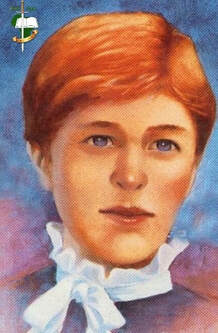 To see a Video of this Presentation click here To listen to an Audio of this Presentation click here To view this article as a PowerPoint presentation on Slideshare, with pictures, click here. Raised in Poverty Mary Slessor (1848-1915) was born, the second of seven children, into a poor and troubled home in Scotland. Although her mother was deeply religious, her father was a violent drunkard, who brought the family to abject poverty, fear and misery. Their one-roomed home had no water, lighting or toilet and hardly any furniture. Mary slept on the floor. Mary’s older brother died, leaving her as the oldest surviving child. When her father died, the burden of supporting her family fell upon her young shoulders. At 10 Mary began work as a half-timer, spending half her time at school and half her time at the mill. At 14 years Mary began working full time, a 58 hour week at the looms. However, her mother ensured that Mary went to Church every Sunday. 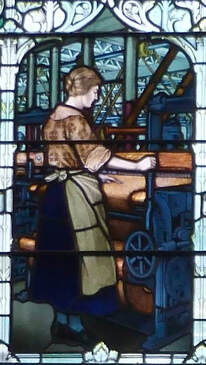 Conversion Mary was frightened into the Kingdom of God by an old widow who warned her of the dangers of hell fire. Horror seized her and she could not sleep until she came to repentance and faith. Called to Missions Mary became a tireless Sunday school teacher, who gave herself completely to working in a mission to the slums around the Church that she attended. Her mother’s interest in missions, her memory of her older brother (who had often spoken of becoming a missionary) and the death of a younger brother (who also had been dedicated to becoming a missionary in Africa) led Mary to wonder if it was possible that she could take her brothers’ place! At that time single women in missions were unheard of. The news of the death of David Livingstone in 1874 settled the matter for her. Training In 1876, Mary left home in Dundee for missionary training in Edinburgh. The United Presbyterian Church appointed Mary as a missionary teacher and she was assigned to a mission station in Calabar (in present day Nigeria). 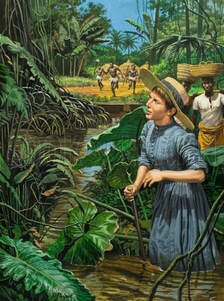 Evangelising Animists The tribes amongst whom Mary was sent were animists who worshipped the sky, sun and rain, and the spirits of the rocks, rivers and trees. Enslaving people of other tribes was an accepted and entrenched practice. Enthusiastic Soul Winner Mary was enthusiastic and impatient, finding the progress of work at the established mission station far too slow. She ached for more demanding tasks, and was reputed to have climbed every tree in the region! Frequent illnesses and attacks of fever, which almost took her life on several occasions, did not seem to diminish her zeal for winning souls for Christ. Mary maintained a cheerful faith. 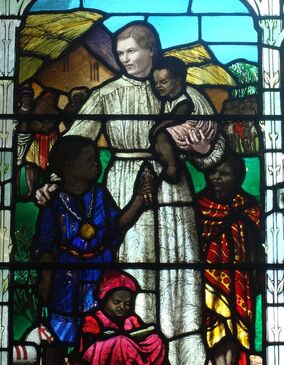 Missionary to Calabar Mary was assigned to a mission station at the Old Town on the East bank of the Calabar River. The people in this area were utterly degraded. Amongst the many things which horrified Mary was the practice of killing twins: “A woman who gave birth to twins was regarded with horror. The belief was that the father of one of the infants was an evil spirit, and that the mother had been guilty of a great sin to bear twins. At least one of the children was believed to be a monster, and so twins were seized, their backs were broken, they were crushed into a calabash or water pot and taken out – not by the doorway, but by a hole broken in the back wall, which was at once built up again, and thrown into the bush, where they were left to be eaten by insects and wild beasts!” Mary’s fierce, red-headed passion raged against this massacre of innocents. The Loss of Her Family While Mary was desperately ill in 1883, a sister died in Scotland. Then Mary received news of her mother’s death, soon followed by news of the death of another sister in Devon. These were dark and difficult days for Mary. “Home” no longer existed. She threw herself even more wholeheartedly into serving her new adopted family in Calabar. A Simple Lifestyle For practicality, she cut her hair short, abandoned all Western comforts and Western food (except for tea as her only “luxury”) and went about barefoot! 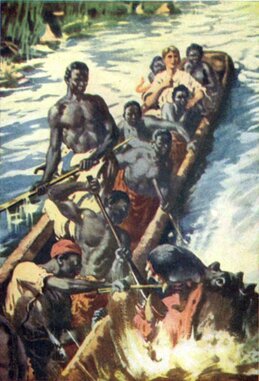 Ministering to Body, Mind and Spirit Mary moved to Creek Town, where she began caring for the many abandoned children. She was constantly interrupted by people coming to her for help. The sick needing treatment, the hungry seeking food and those with disputes seeking her counsel to bring about resolution. Mary set up schools in Ekenge and Ifako. Soon churches were built alongside the school houses. Amidst rampant witchcraft, drunkenness and immorality, Mary undertook much of the manual work of constructing the school and church buildings herself, as well as the daily tasks of education and evangelism. Mary served as a teacher and nurse, dispensing medicines and conducting four services each Sunday, walking many miles each day. Healing Bodies and Saving Lives Once when instructed to heal a dying chief, Mary knew that if she failed she would be blamed for his death. First she got rid of all the witchcraft charms and sacrificed chickens, then she prayed and gave the chief good medicine and nursed him back to health. His wives were particularly grateful as they would have otherwise been killed and buried with the chief. They were keen to learn about “The Book”. The Harvest is Large and the Workers Few A report of Mary’s pioneer exploits in the Missionary Herald prompted a young Scottish carpenter, Charles Ovens, to come out to Africa to help her with the carpentry. His arrival was a great encouragement and practical help. 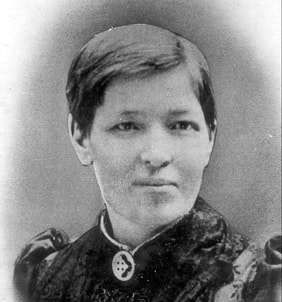 Missions above Marriage In 1891, during her furlough in Scotland, Mary was courted by Charles Morrison and became engaged. However, when Mary realised that her marriage would mean settling in Scotland and not returning to Calabar, she broke off the engagement and returned to Africa. Mother of all the People At this point the British government recognised that Mary Slessor enjoyed an unparalleled trust from the local people who called her Eko Kpukpro Owa - Mother of All the People - and appointed her as a Consular Agent. Later she was promoted to being Vice-President of the Itu Native Court. All the public affairs of the Okoyong were conducted through her. She presided over court cases and ensured that justice was served. 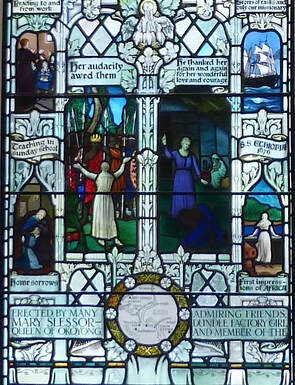 Confronting Witchdoctors On one occasion as a woman was spread-eagled on the ground to have boiling oil poured on her, Mary boldly intervened and physically prevented the witchdoctor from harming his victim. The people were astounded at her courage in confronting chiefs and witchdoctors, and that she survived! They concluded that it was the power of her God which protected her. Consular Agent of the Crown Mary was held in the highest respect by the local people, although the British government would not have approved if they had known of the extent to which she went in her court cases. Mary never let legal technicalities get in the way of fairness. One plaintiff, while having his suit upheld against another, was punished for not treating his mother properly, failing to maintain adequate hygiene and for neglecting his farm! Converting Cannibals Mary was seldom free from illness. When the population moved, she moved with them. In 1903, Mary had the joy of seeing the first seven young Christians baptised, and the first Communion service held. Shortly afterwards she moved to the Itu, which was notorious as a market place for slavery, and where cannibalism was still practised. Soon she had gathered a congregation of 300 and established a school with 68 pupils. 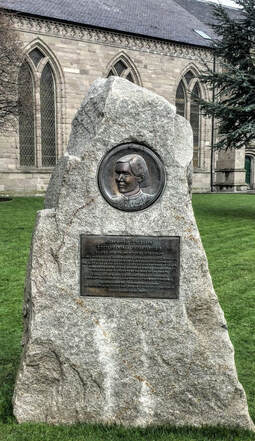 Perseverance Despite illness and discouragements, Mary was tireless in her hard work and pioneering of mission stations, schools and churches. Fever and sickness constantly afflicted her until in February 1915, at the age of 66, she went to be with the Lord. A Legacy of Liberty Because of her efforts, many schools and churches had been established, the killing of twins ceased, slave trading in Calabar was eradicated, drunkenness, killing and witchcraft diminished and most of the people of Calabar came to embrace the Gospel of Christ. “Those who are wise shall shine like the brightness of the firmament, and those who turn many to righteousness like the stars forever and ever.” Daniel 12:3 Dr. Peter Hammond Frontline Fellowship P.O. Box 74 Newlands 7725 Cape Town South Africa Tel: 021-689-4480 Email: [email protected] 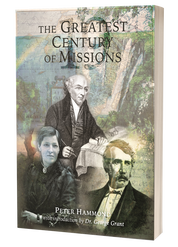 This article was adapted from the first chapter of The Greatest Century of Missions book (224 pages with 200 photographs, pictures, charts and maps), available from: Christian Liberty Books, PO Box 358 Howard Place 7450 Cape Town South Africa Tel: 021-689-7478, Fax: 086-551-7490, Email: [email protected], Website: www.christianlibertybooks.co.za.
1 Comment
5/8/2022 15:13:04
Beautiful narration of Mary Slessor's whole life in a nutshell. Enjoyed reading it. May God richly bless your efforts. My humble suggestion to publish an article on Ziegenbalg's life. If needed I am ready to assist with suggestion of the books to read.
Reply
Leave a Reply. |
More Articles
All
Archives
December 2022
|
"And Jesus came and spoke to them, saying, “All authority has been given to Me in heaven and on earth.
Go therefore and make disciples of all the nations, baptizing them in the name of the Father and of the Son and of the Holy Spirit,
teaching them to observe all things that I have commanded you; and lo, I am with you always, even to the end of the age.” Amen.” Matthew 28: 18-20
Go therefore and make disciples of all the nations, baptizing them in the name of the Father and of the Son and of the Holy Spirit,
teaching them to observe all things that I have commanded you; and lo, I am with you always, even to the end of the age.” Amen.” Matthew 28: 18-20
|
P.O.Box 74 Newlands 7725
Cape Town South Africa |
|
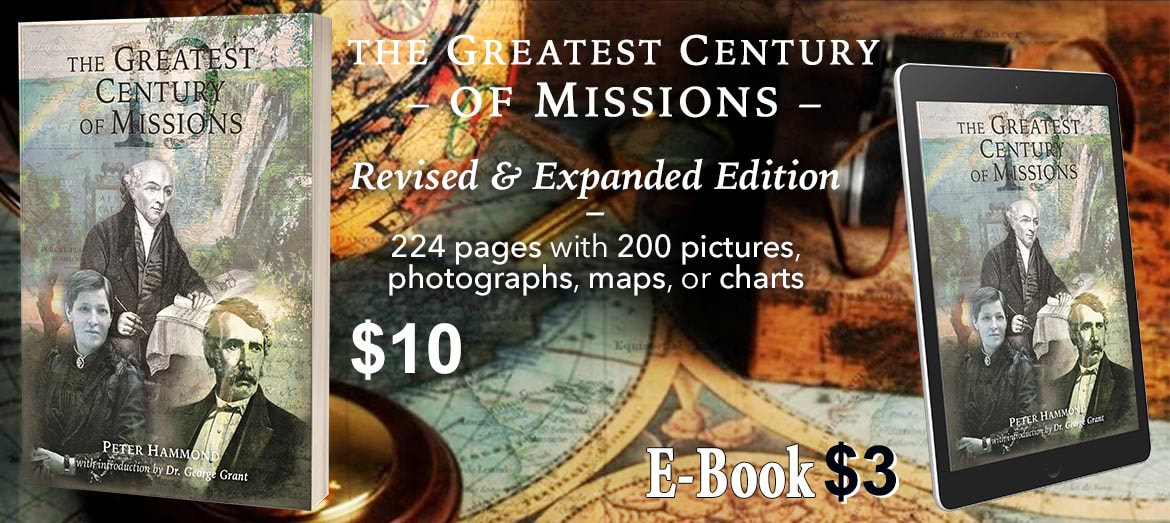
 RSS Feed
RSS Feed
